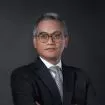This Newsflash is a part of our Health Omnibus Law, i.e., Law No. 17 of 2023 dated August 8, 2023 on Health (the "Health Law"). As noted in our previous Newsflashes, the Health Law is issued by way of the omnibus method and revokes several laws in the health sector, including Law No. 36 of 2009 dated October 13, 2009 on Health.
The Health Law governs a wide range of topics in the health sector. This Newsflash focuses on key provisions relating to the simplification of registration and practice licenses for medical and health care personnel.
♦ Elaboration on Medical Personnel and Health Care Personnel
Prior to the enactment of the Health Law and the issuance of the Constitutional Court Decision No. 82/PUU-XIII/2015 dated December 14, 2016 (the "Decision"), the terms "medical personnel" and "health care personnel" could be used interchangeably since the previous regulatory regime did not specifically define the term "medical personnel" and before the issuance of the Decision, medical personnel were categorized under health care personnel.
As a background, under the General Elucidation of Law No. 29 of 2004 dated October 6, 2005 on Medical Practice as partially revoked by Law No. 36 of 2014 dated October 17, 2014 on Health Care Personnel (collectively, "Law 29/2004"), it could be interpreted that medical personnel consisted of doctors and dentists since they were personnel that were authorized to take medical actions on patients based on their relevant competence. Meanwhile, referring to Article 11(1) of Law No. 36 of 2014 dated October 17, 2014 on Health Care Personnel ("Law 36/2014") before the issuance of the Decision, health care personnel consisted of medical personnel, clinical psychologists, nurses, midwives, pharmacists, public health workers, environmental health workers, nutritionists, physical therapists, medical technicians, biomedical engineering personnels, traditional health workers, and others. Therefore, this caused the public to interchangeably use those two terms.
After the issuance of the Decision, medical personnel were no longer included under health care personnel. However, the then-regulation did not provide a clear definition of the term "medical personnel".
Now, with the enactment of the Health Law, these two terms (i.e., medical personnel and health care personnel) are now clearly distinguished and defined. Under the Health Law, medical personnel are persons who devote themselves to the health sector and possess a professional attitude, knowledge, and skills through education in the medical or dentistry profession which requires the authorization to conduct health attempts. Meanwhile, the definition of health care personnel is nearly identical, but their professional attitude, knowledge, and skills are obtained through a higher education (pendidikan tinggi), not through education in the medical or dentistry profession. Furthermore, Articles 198 and 199(1) of the Health Law elaborate that the term "medical personnel" covers doctors and dentists, including the specialists and subspecialists; while the term "health care personnel" covers the same types of personnel described under Law 36/2014 following the issuance of the Decision.
♦ Practice Licenses for Medical Personnel and Health Care Personnel
To be able to practice in the health services sector, medical and health care personnel are required to obtain a registration certificate (Surat Tanda Registrasi or an "STR") and a practice license (Surat Izin Praktik or an "SIP"). Under the previous regime (i.e., Law 29/2004 and Law 36/2014), medical and health care personnels had to fulfill the following requirements to obtain an STR:
- Possession of a medical or dentistry degree (for medical personnel) or a degree in health education (for health care personnel);
- a statement letter to state that the person had taken the profession's oath;
- a certificate stating the person has sound mental and physical health;
- a competency or professional certificate; and
- a statement of compliance with the provisions of professional ethics.
The STR was issued by the relevant health council and was valid for five years.
In addition to the STR, the previous regime also stipulated that to obtain an SIP, medical and health care personnels had to satisfy the following conditions:
- Possession of a valid STR;
- a place of practice; and
- a recommendation from the relevant professional organization.
An SIP was issued by the health officials of the regency/city where the practice was held and would be valid subject to the validity of the STR and whether the place of practice would still be in accordance with the SIP. Furthermore, Law 29/2004 limited medical personnel to conduct practice in a maximum of only three places based on its SIP.
With the enactment of the Health Law, the requirements for obtaining an STR and an SIP are simplified. Articles 260(3) and (4) of the Health Law regulate that the prerequisites for obtaining an STR are at least the following: (i) possession of a degree in health education and/or professional certificate; and (ii) a competency certificate. As such, the Health Law removes the prerequisite for an STR to obtain a statement letter providing a person has taken the profession's oath and a certificate stating a person had sound mental and physical health.
As for obtaining an SIP, according to Article 264(1) of the Health Law, medical and health care personnel now must satisfy the following conditions: (i) owns the STR; and (ii) owns a place of practice. Therefore, removing the need to obtain a recommendation letter from the relevant professional organization.
Besides the simplification in obtaining an STR and an SIP, other notable changes introduced by the Health Law in relation to the STR and the SIP are: (i) an STR now does not have an expiry date, its validity shall end if the related personnel passes away, it is inactivated by the health council, or revoked based on a final and binding court decision; (ii) an SIP is now valid for five years; and (iii) the Health Law does not regulate a provision that limits a maximum of three places for a medical personnel's place of practice based on its SIP.
Since the Health Law stipulates that further provisions of STR and SIP will be further regulated in a Government Regulation, we will monitor the development and will issue further updates as relevant.
The content of this article is intended to provide a general guide to the subject matter. Specialist advice should be sought about your specific circumstances.


